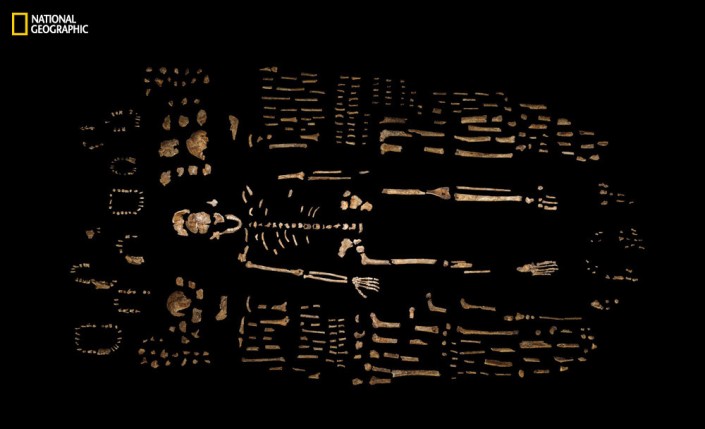Discovery of homo naledi ranks 2nd among top science stories for 2015

Photo by Robert Clark/National Geographic; source: Lee Berger, Wits, photographed at Evolutionary Studies Institute
Uncovering the remains of homo naledi, a new human relative species found in a South African cave by a Texas A&M University professor, has been named one of Discover magazine’s “Top 100 Stories for 2015.”
The story was ranked No. 2 on the magazine’s list, topped only by new findings about the planet Pluto and its unique landscape features.
Darryl de Ruiter, professor of anthropology at Texas A&M, along with colleagues from the University of Witwatersrand and James Cook University in Australia, was one of the original finders of the skeletons in 2013 in the cave, located a few miles from Johannesburg. The discovery was the focus of specials on the National Geographic channel and also the PBS show “Nova.”
De Ruiter says there are least 15 individual skeletons that appear to have been intentionally placed in the cave in the remote past, ranging in age from infants to elderly adults, and it likely represents some form of systematic disposal of the dead. He adds that there could be hundreds more skeletons in the cave.
The new species is intriguing, de Ruiter says, because “parts of it are like us, and parts of it are unlike us. It is human in some regards, but in other ways it is decidedly non-human. There is no question that this is a new addition to our family tree.
“Neanderthals and their ancestors – which go back about 400,000 years — are the only species we know that intentionally buried their dead. This cave served as a disposal site for these dead bodies, and adds another species to the list of relatives engaging in this most human of behaviors,” de Ruiter adds.
The ranking in Discover’s Top 100 stories marks the fifth time in the last six years that a Texas A&M research project has made the list.
de Ruiter and his team previously made the list in 2010 with their announcement of the new species Australopithecus sediba, the same year that a news story about Texas A&M researchers examining the male pipefish that gives birth appeared, while in 2011 oceanography professor John Kessler and his work on the Deepwater Horizon oil spill was included in the top 100 rankings.
In 2013, the discovery of an enormous volcano in the Pacific Ocean that is named Tamu Massif after Texas A&M was ranked No. 11 by the magazine, and last year the first genome sequencing of the Ice Age skeletal remains of a 1-year-old boy by Texas A&M professor Mike Waters made the list. The findings proved that the direct ancestors of modern Native Americans were from Asia and not Europe as previously believed.
Keith Randall, associate director of news and information services, wrote the university’s versions of all the noted endeavors cited by the magazine.

